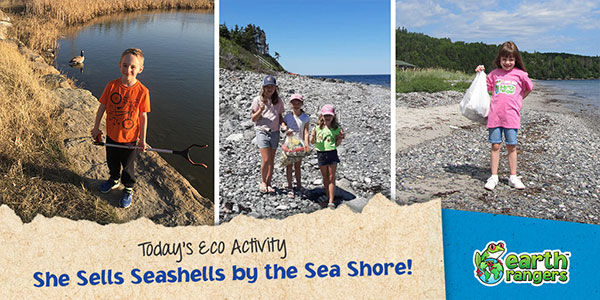
In Canada, we’re extremely lucky to have a country full of bustling streams, glassy lakes and swelling ocean coastlines. To be exact, approximately 12% of Canada’s surface is covered in water! One of the largest problems our shorelines face is, you guessed it, pollution! Ever wonder what exactly ends up in our waterways? Well, it turns out that most of the litter found along shorelines and in bodies of water comes from activities that occur on land. For today’s eco-activity, we want you to discover the most common pollutants affecting your nearby shoreline. Head out to a local shoreline with a parent or guardian to do your own garbage clean up (don’t forget to bring gloves, a bag to stash the litter, and good shoes for walking!), and use the tally chart below to conduct your own shoreline waste audit!

Click here to download your Waste Breakdown Tally Chart
At the end of your litter pick up, talley up the total number of pollutants you were able to collect. What is the most common piece of litter? Do you know where in your community it is coming from? Can you personally avoid using that item? Is there a way we can prevent the item from getting into our aquatic habitats?
Considering it is Plastic Free July (the best month of the year!!), if you want to reduce your own plastic waste, now is the time to start! Download the Earth Rangers App to learn more about shorelines and how to hold your own shoreline cleanup by accepting the Shoreline Saver Mission!




Luckily none of the shorelines near me have much garbage. So that means I’m going to have to go somewhere I’ve never seen before. That will be fun!
I think if cigarettes are the thing we find most often we can DEFINITELY all not use those (seems none of us are even allowed to have them and most of us, including myself, wouldn’t).
And we don’t need to use as much paper
Yeah I agree we dont need cigarettes they bad for lungs anyway
Yeah